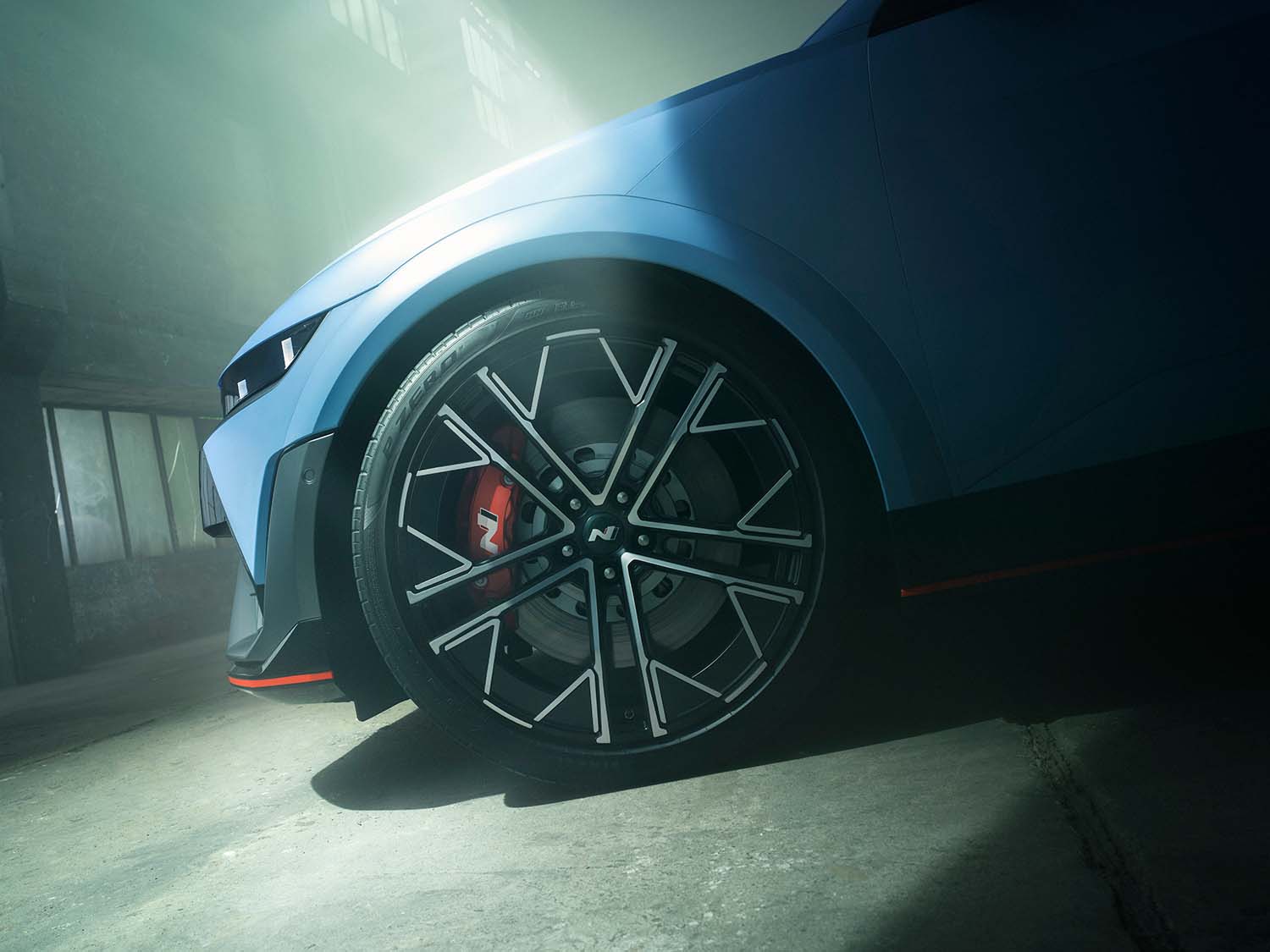Since Hyundai developed its own in-house performance department called N just a few years ago, it’s been gaining quite a reputation for churning out some quick, capable cars, both on track and off. And now, it’s taken the next logical step in its evolution with its first all-electric N model: the Ioniq 5 N.
The high-performance EV is making its debut today at the Goodwood Festival of Speed in the UK, and while at first glance it may look like your usual Ioniq 5, radical changes to aerodynamics, chassis, motors and battery are meant to make it much more capable around a race track. These changes are meant to follow the three pillars the N brand has set for itself: Corner Rascal (yes, you can giggle if you like), Racetrack Capability and Everyday Sportscar.

Hyundai Ioniq 5 N
It all starts from the ground up, with 42 additional welding points, 2.1 meters of additional adhesives, reinforced motor and battery mounts and front and rear subframes on the standard model’s Electrified-Global Modular Platform (E-GMP). The drive axles and steering column have also been strengthened. With these changes, along with a revised suspension and larger 21-inch wheels and 275/35R21 Pirelli P-Zero tires, the Ioniq 5 N is 20 millimetres lower and 50 mm wider than the standard version, while a larger diffuser stretches the overall length by 80 mm.

Hyundai Ioniq 5 N
The new 84 kWh battery (with 800 volt charging architecture), up from 77 kWh in the standard 5, gets an enhanced battery thermal management system, with increased cooling area, better motor oil cooler and battery chiller, while there are independent radiators for the battery and motors. The twin motors – it’s all-wheel drive, of course – produce a total of 448 kW (600 hp) and 545 lb.-ft. of torque, though a 10-second ‘N Grin Boost’ mode bumps that to 478 kW (641 hp) and 567 lb.-ft. Hyundai will reveal the total range (as well as the price) nearer to its launch date early next year.

Hyundai Ioniq 5 N
Don’t worry, the brakes have also been enlarged to accommodate the extra speed, not to mention weight – oh yes, the N weighs more than the standard Ioniq 5 Preferred AWD Long Range’s 2,025 kilograms, though officials won’t say yet by how much. Front discs are now 400 mm, with 360 mm in the rear, and they get four-piston front calipers and dedicated air guides in the front and rear for better cooling. The N also features the electronic systems N Pedal (helps increase regen force for better weight transfer in a corner) and N Brake Regen (said to guarantee consistent braking and better heat management).

Hyundai Ioniq 5 N
The car has too many electronic driving systems to list here, but a few notably stand out. Hyundai has developed what it calls ‘N e-shift’ and, paired with its ‘N Active Sound +’ emulates an eight-speed dual-clutch gearbox in a conventional car, complete with steering wheel-mounted paddle shifters. And along with the sound of an ICE vehicle, that N Active Sound + also features two other non-conventional sounds, including one inspired by a jet fighter.

Hyundai Ioniq 5 N
For those of you who like to let it all hang out, there’s the N Drift Optimizer, which helps maintain drift angles, and of course there is launch control. For serious track fun, the Ioniq 5 N allows the driver to control energy usage and battery cooling for different situations, such as between a drag strip or a road course.
Outside, the four-door’s shape has been modified for better aero, with items such as a front splitter and rear diffuser and wing, three front active air flaps for better brake cooling, and other little tweaks meant to cut through the wind easier. Swatches of ‘Luminous Orange Matte’ paint on the bodywork indicate this is an all-electric N car.

Hyundai Ioniq 5 N
Inside, this is the first ‘N’ car to get the actual letter on the steering wheel. It also features lower, sporting bucket seats – about 20 mm lower than the standard Ioniq 5 – with reinforced bolsters, and knee and shin pads for more spirited driving. A 12.3-inch infotainment screen also features special graphics and options available only to N cars. Hyundai is also quick to point out the extensive use of recycled materials in the cabin.
Will owners take the Hyundai Ioniq 5 N to the track? It certainly sounds capable, though the issue of charging after a long day of hooning is something to think about. But we’d certainly like to try.






